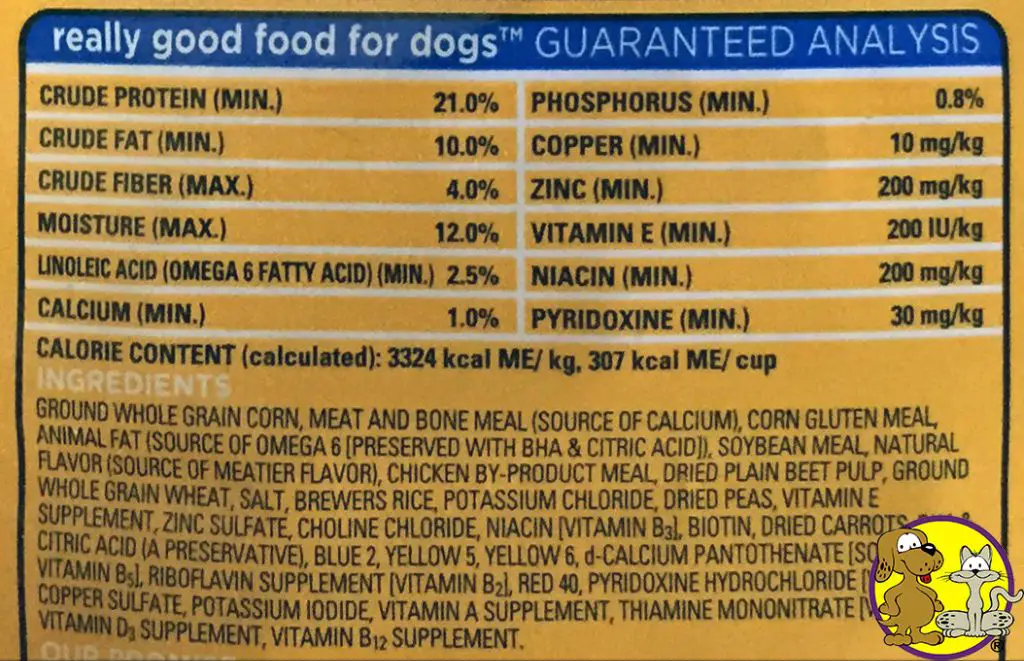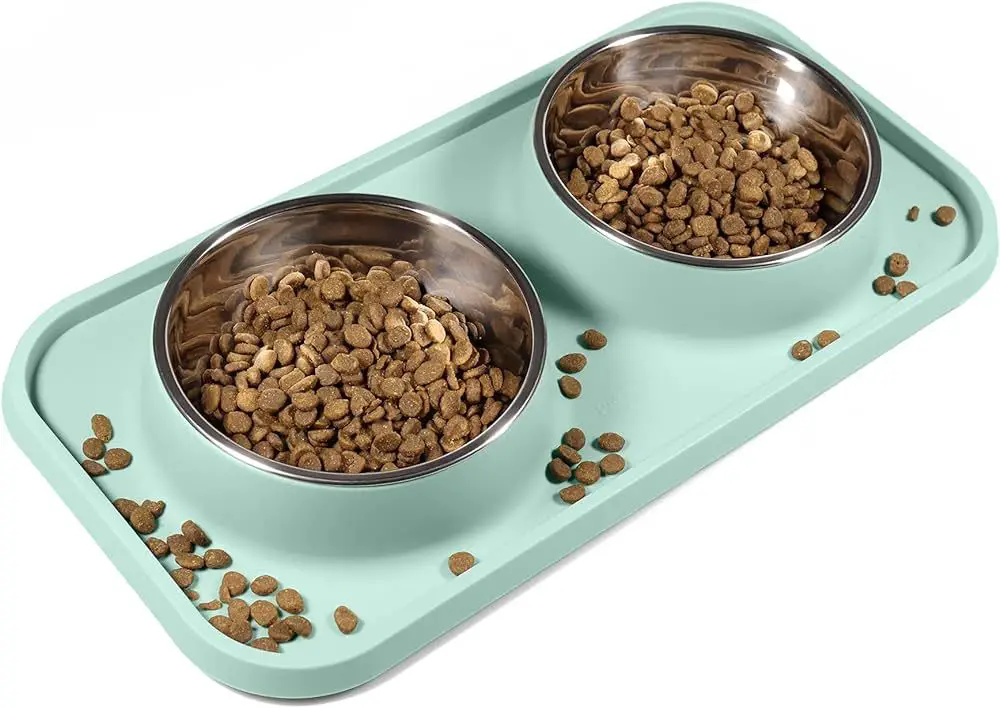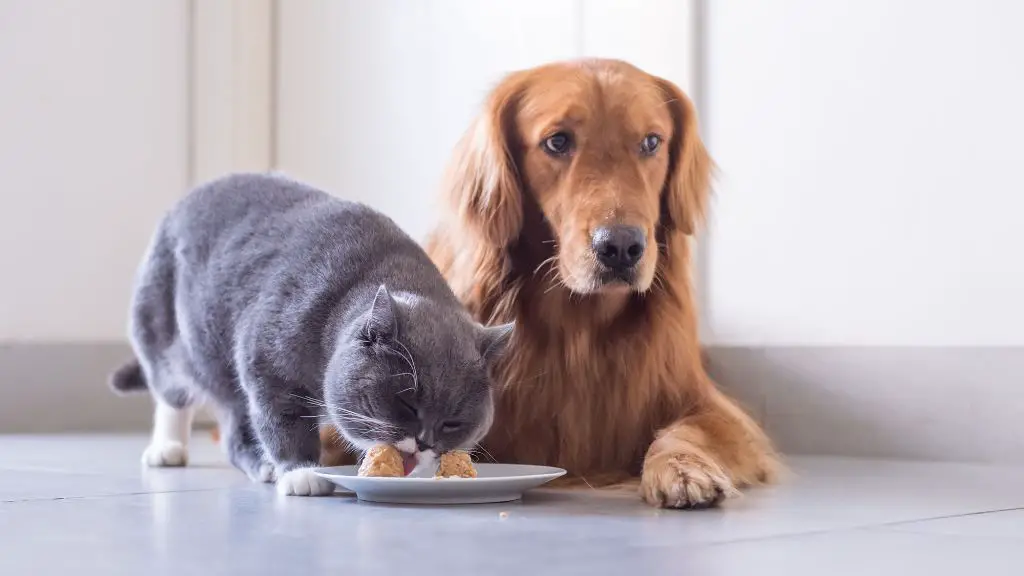Pet owners with both cats and dogs often wonder if it’s okay to mix their pets’ food to simplify mealtimes. This common question raises important concerns, as the nutritional needs of cats and dogs differ significantly. Feeding inappropriate diets can negatively impact health and wellbeing. While mixing in small amounts occasionally likely causes little harm, routinely combining cat and dog foods poses problems. Careful consideration of the unique dietary requirements, as well as the differing tastes and textures preferred by each species, suggests keeping cat and dog foods separate provides the best nutrition. This article will examine the key reasons why mixing dry cat and dog foods regularly is widely discouraged by veterinarians.
Nutritional Differences Between Cats and Dogs
Cats and dogs have very different nutritional needs. Cats are obligate carnivores, meaning they must eat meat to acquire essential amino acids like taurine (Pet Food Institute). Unlike dogs, cats cannot produce enough taurine on their own and must obtain it from their diet. On the other hand, dogs are omnivores and can meet their nutritional needs with both plant and animal sources.
Cats require a diet high in quality protein and fat to maintain their lean muscle mass. Experts recommend protein make up at least 30% of a cat’s diet, compared to only 18% for dogs (Meow Mix). Cats also need more fat and calories in their food to fuel their active metabolisms. Dogs have less strict protein requirements since their bodies can synthesize many essential amino acids.
These differences mean cats and dogs have very unique nutritional needs. Cat food is specially formulated with more protein-rich meat sources and added taurine. Dog foods contain more plant-based ingredients, fiber, and carbohydrates. Feeding a cat dog food long-term can lead to protein and taurine deficiency, while feeding dogs cat food may lead to obesity or other issues.
Ingredients in Cat and Dog Food
There are some key differences in the ingredients used in cat food versus dog food. Dog food tends to have more carbohydrates while cat food has higher levels of animal-based proteins.
Cats are obligate carnivores, meaning they need a diet high in meat-based proteins. Cat foods will have a higher percentage of proteins from animals sources like chicken, turkey, fish, lamb and beef compared to dog food. Dogs are okay with more plant-based proteins like soy or corn (1).

The vitamin and mineral mixes in cat and dog foods are also formulated differently to meet their unique nutritional needs. For example, cat food contains more arachidonic acid, niacin and vitamin A since cats require higher levels of these nutrients (2).
These differences in ingredients and nutritional formulations mean cat and dog foods cannot be used interchangeably. Feeding the wrong food can lead to nutritional imbalances over time.
Health Concerns of Mixing Foods
One of the biggest health risks of regularly feeding cat food to dogs or dog food to cats is that their nutritional needs are quite different. Cat food lacks certain nutrients that dogs need to thrive, while dog food lacks nutrients essential for cats [1].
For example, dogs have higher protein requirements than cats, so the protein levels in cat food are too low to meet a dog’s needs. Cats, on the other hand, require more protein than dogs [2]. Feeding cat food to dogs can lead to protein deficiency over time if it becomes a regular part of their diet.
Other key differences are that cats need more taurine, arachidonic acid, vitamin A, and arginine than dogs require. Dogs need more calcium, fiber, niacin, vitamin B6, and vitamin C compared to cats’ nutritional requirements [3]. An improper balance of nutrients can cause health issues in the long run.
Therefore, while the occasional nibble of the other species’ food won’t cause problems, regular long-term feeding of cat food to dogs or vice versa can result in nutritional deficiencies and associated health concerns.
Effect on Palatability
Research shows that cats and dogs prefer foods designed specifically for their own species’ taste preferences. Unlike humans, cats have relatively few taste buds and rely heavily on smell for food enjoyment, while dogs have many more taste buds attuned to strong flavors [1]. Mixing cat and dog foods can create an unfamiliar blend of flavors, aromas, and textures that may cause one or both pets to reject the food altogether.
Studies on pet food preferences reveal that both cats and dogs can distinguish between different flavors added to their food, with each species showing preferences for certain flavors over others [2], [3]. Altering the carefully designed flavor profile of cat and dog foods by mixing them may make the food less palatable and appetizing. Pet owners report fussy eaters refusing mixed food or eating around one component. It’s best to avoid compromising pets’ enjoyment of their meals by mixing incompatible foods.
Difficulty Meeting Unique Needs
Mixing cat and dog food can make it hard to balance the ideal ratios of protein, fat, carbohydrates, and other nutrients for either species. According to a 2020 review Cats require high-protein diets, while dogs have a more omnivorous metabolism and can utilize higher carbohydrate ratios. When combining foods, the nutritional percentages can easily become skewed in an unhealthy way.

Both cats and dogs can have special dietary needs or restrictions that require consistency in their nutrition. For example, pets with food allergies, gastrointestinal issues, or conditions like diabetes may need a prescription diet formulated and balanced for their needs. Mixing in other foods can interfere with the nutritional therapy. According to one pet food retailer, an “imbalance of bad bacteria in your pet’s microbiome can cause digestive issues.” Therefore, sticking to one formulated diet is important.
The unique nutritional requirements of cats versus dogs means it’s safest to avoid mixing their foods whenever possible. Consult your veterinarian for the best diet for your individual pet.
Increased Risk of Obesity
There is a risk of obesity when feeding a dog cat food, as cat food tends to be more calorie dense per cup than dog food. As the Association for Pet Obesity Prevention explains, “Cats require almost two times more calories per pound of body weight to maintain their weight than dogs. The higher caloric needs of cats means pet food made for cats has more calories per cup than dog food” (Downes et al., 2017). Dogs may overeat when fed cat food since they don’t feel as full due to the higher calories per cup. One study found over half of dogs were obese, with contributing factors being the type and amount of food fed (German, 2006). If owners choose to mix cat and dog food, they need to carefully monitor portion sizes and intake to prevent weight gain in the dog.

Logistical Challenges
There are some logistical challenges that come with feeding cats and dogs separate diets. According to VCA Hospitals, you have to purchase both cat and dog foods to meet their unique nutritional needs. This makes it more difficult and time consuming to monitor each pet’s food intake compared to feeding one diet. As Hill’s Pet Nutrition explains, feeding separate diets also increases your overall costs since you have to buy different foods formulated for cats and dogs.
Safer Alternatives
The safest option is to feed cats and dogs their species-specific diets. There are high-quality commercial foods formulated to meet the unique nutritional requirements of cats and dogs (source). Dogs have different energy requirements than cats, so their foods contain varying amounts of fats, proteins, and carbohydrates to meet those needs.
One compromise is to feed cats wet food formulated for felines along with dry kibble meant for canines. Cats have a higher requirement for moisture than dogs, so the wet food will help them stay hydrated (source). The kibble can meet the dog’s nutritional requirements. Pay close attention to feeding guidelines based on your pets’ life stages and breeds.
For optimal health, it’s also best to feed cats and dogs of different ages, sizes, and activity levels separately. This allows you to provide each pet with an appropriate diet without competition or overeating by one animal. Speak to your veterinarian about customizing feeding plans if you have a multi-pet household.
Conclusion
In summary, it’s generally not recommended to mix cat and dog foods together. Cats and dogs have different nutritional requirements, and their foods are formulated to meet those specific needs. Mixing the two could lead to nutritional imbalances over time. Cats also tend to have more finicky palates, so mixing in dog food may cause them to reject the food entirely. From a practical standpoint, it can also be difficult to ensure each pet is getting the right ratio of its needed nutrition when free-fed a mixed blend.

The best approach is to feed cats and dogs their own species-appropriate diets. Look for foods designed specifically for each pet’s life stage and health status. Consult your veterinarian if you have concerns about your pet’s nutrition. With separate formulated foods for each animal, you can better provide the unique nutritional support they require.
In conclusion, it’s better to avoid mixing cat and dog foods together whenever possible. Feed each pet the diet intended for its nutritional needs to support optimal health.

